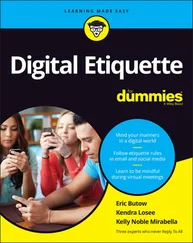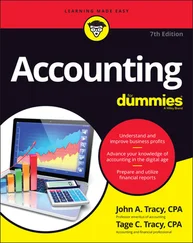Kenneth W. Boyd - Cost Accounting For Dummies
Здесь есть возможность читать онлайн «Kenneth W. Boyd - Cost Accounting For Dummies» — ознакомительный отрывок электронной книги совершенно бесплатно, а после прочтения отрывка купить полную версию. В некоторых случаях можно слушать аудио, скачать через торрент в формате fb2 и присутствует краткое содержание. Жанр: unrecognised, на английском языке. Описание произведения, (предисловие) а так же отзывы посетителей доступны на портале библиотеки ЛибКат.
- Название:Cost Accounting For Dummies
- Автор:
- Жанр:
- Год:неизвестен
- ISBN:нет данных
- Рейтинг книги:4 / 5. Голосов: 1
-
Избранное:Добавить в избранное
- Отзывы:
-
Ваша оценка:
- 80
- 1
- 2
- 3
- 4
- 5
Cost Accounting For Dummies: краткое содержание, описание и аннотация
Предлагаем к чтению аннотацию, описание, краткое содержание или предисловие (зависит от того, что написал сам автор книги «Cost Accounting For Dummies»). Если вы не нашли необходимую информацию о книге — напишите в комментариях, мы постараемся отыскать её.
Cost Accounting For Dummies
Cost Accounting For Dummies
Cost Accounting For Dummies — читать онлайн ознакомительный отрывок
Ниже представлен текст книги, разбитый по страницам. Система сохранения места последней прочитанной страницы, позволяет с удобством читать онлайн бесплатно книгу «Cost Accounting For Dummies», без необходимости каждый раз заново искать на чём Вы остановились. Поставьте закладку, и сможете в любой момент перейти на страницу, на которой закончили чтение.
Интервал:
Закладка:
As an example, let’s say you own Treeline Outdoor, an e-commerce company that sells hiking and camping gear. Your buyers shop online and compare prices, and you compete against a number of competitors.
Maintaining a website
Every business has a website these days, but e-commerce firms make a much larger investment in this area. Treeline’s website represents that first interaction that a prospect has with the business. How often have you visited a site, and left after 10 seconds? Yeah, me too. That’s what Treeline is trying to avoid.
The site must be attractive, particularly the homepage, and website navigation has to be easy for shoppers. E-commerce firms make a big investment in website design, including product images and graphics. Ready to check out? These sellers also need a smooth process for selecting items, updating their shopping basket, entering a shipping address, and for processing payments.
Ensuring product fulfillment
It’s frustrating to order a product, and receive the wrong merchandise. E-commerce businesses understand that an error during fulfillment can result in a lost client (been there, done that).
Treeline has several options here. The company could warehouse inventory and ship items using company employees. However, this choice requires Treeline to pay for a warehouse and extra staff, regardless of sales levels. If sales are declining, those costs may keep you up at night.
For many sellers, a better choice is dropshipping , in which a supplier maintains inventory and ships products when the seller receives an order. The pros and cons of dropshipping are discussed in Chapter 9.
Getting buyers interested
Nothing happens until a prospect visits the website, so it’s not surprising that sellers invest heavily in marketing. Here are two common marketing strategies:
Online ads: Pay for ads on websites and social media platforms where your target audience is spending time.
Content marketing: Create blog posts and videos that solve problems for your target market. For example, Treeline might write an article called: “10 Items You Must Have for a Winter Camping Trip” (not my thing, but you get the idea).
E-commerce firms spend big on websites, product fulfillment, and marketing. You won’t spend money on a brick-and-mortar store, but you have a number of other costs to manage.
Finding costs most companies incur
Most companies incur costs for human resources, marketing, lawyers, accountants (hey, that’s good!), and other experts. The costs might be salary and benefits for experts inside your company. You also might pay outside experts to perform the work.
Most companies incur costs for insurance, utilities, supplies, and depreciation expense on assets. So keep in mind that there are costs that apply to companies of all types. These costs are indirect costs. You can’t trace them directly to a product or service.
Salespeople are often paid a salary plus a commission based on sales. The cost of a salesperson’s commission is normally traced to the product as a direct cost.
Why Are You Spending? Cost Drivers
A cost object is the product, service, or company department where you incur costs. Picture the cost object as a sponge that sucks up money. A cost driver is an item that changes costs. If the cost object is a sponge full of costs, the cost driver changes the size of the sponge.
If you manufacture leather baseball gloves, leather material is a cost driver. If you manage the human resources department, an increase in job interviews is a cost driver. More interviews require more time from your staff, and that labor time has a cost.
This section covers two related concepts: relevant range and inventoriable costs.
Pushing equipment too hard and relevant range
Relevant range is the area in which a set of assumptions about your costs hold true. By area, I mean a minimum and maximum level of use of an asset. As long as your use of the asset stays in that range, the cost assumptions apply. If you use the asset too much (out of the relevant range), it eventually breaks down. Breakdowns occur when you try to operate beyond your asset’s maximum capacity.
The bottom of a range is the minimum. For this book, you focus on the maximum.
At this point, you need to know about assets. An asset is anything you use to make money in your business (anything that provides your company with some benefit in the future). Essentially, you use up assets to make money.
 An asset may be a tangible asset — a factory, a vehicle, or a piece of equipment. An asset can be intangible, such as a brand name or a patent. For example, the brand names Coca-Cola, McDonald’s, and Nike are assets. Those names drive business to those companies.
An asset may be a tangible asset — a factory, a vehicle, or a piece of equipment. An asset can be intangible, such as a brand name or a patent. For example, the brand names Coca-Cola, McDonald’s, and Nike are assets. Those names drive business to those companies.
Assume you’re a plumber. You have a truck that you use to carry equipment to homes to work on plumbing. The truck is an asset. As you drive the truck, two things happen. First, you’re doing plumbing work and making money. At the same time, the value of the asset is declining. The decline in value of a tangible asset is called depreciation.
Now, here’s where relevant range comes in. There’s a limit to how much you can use the asset. The truck can be driven only so many miles before it needs maintenance or a repair.
Say you’re planning your plumbing business for the month. Based on your experience, you know that your truck needs maintenance every 4,000 miles. The maintenance means the truck can’t be used for one day.
Because you perform plumbing work seven days a week, the day maintenance is performed on a day when you don’t earn revenue. The relevant range for your truck is up to 4,000 miles. Beyond that point, you need to take it out of service for a day. To work seven days a week, you may need to have another truck — another asset.
There’s relevant range for many assets. Maybe you can run your sewing machines for 10,000 hours before they need repairs. You might find that your commercial printing press has a maximum number of print jobs it can perform without breaking down. If you need production capacity above the relevant range, you need to invest in another asset. That investment is a cost.
Relevant range isn’t just about breakdowns and maintenance. Even if your machinery works as expected, there’s only so much capacity you can handle. Say you have machine capacity to produce 1,000,000 gloves a year. If you want to increase production to 1,200,000 gloves, you need more machines. That means an investment in more fixed assets.
Previewing inventoriable costs
Inventoriable costs are costs that can be traced to your inventory. That includes the purchase price of the inventory item. However, there are other costs that should be added to the asset’s cost. You refer to these costs as inventoriable.
Let’s say you own a furniture store that sells lamps. You carry an expensive model of lamp in your store. Parts of the lamp can break easily. As a result, it’s expensive to ship the lamps. When the lamps arrive, they’re stored carefully to prevent breakage.
Your inventory value for the lamp obviously includes the purchase price. It should also include all costs to prepare the asset for sale, such as the shipping cost and any extra costs you incur to store and display the lamp.
Now consider the impact of including more costs in inventory. Inventory costs aren’t posted as expenses (expensed) until the asset is sold. All the lamp costs remain in inventory until a lamp is sold. At that point, the lamp cost is posted to cost of sales (also called cost of goods sold) .
Читать дальшеИнтервал:
Закладка:
Похожие книги на «Cost Accounting For Dummies»
Представляем Вашему вниманию похожие книги на «Cost Accounting For Dummies» списком для выбора. Мы отобрали схожую по названию и смыслу литературу в надежде предоставить читателям больше вариантов отыскать новые, интересные, ещё непрочитанные произведения.
Обсуждение, отзывы о книге «Cost Accounting For Dummies» и просто собственные мнения читателей. Оставьте ваши комментарии, напишите, что Вы думаете о произведении, его смысле или главных героях. Укажите что конкретно понравилось, а что нет, и почему Вы так считаете.












